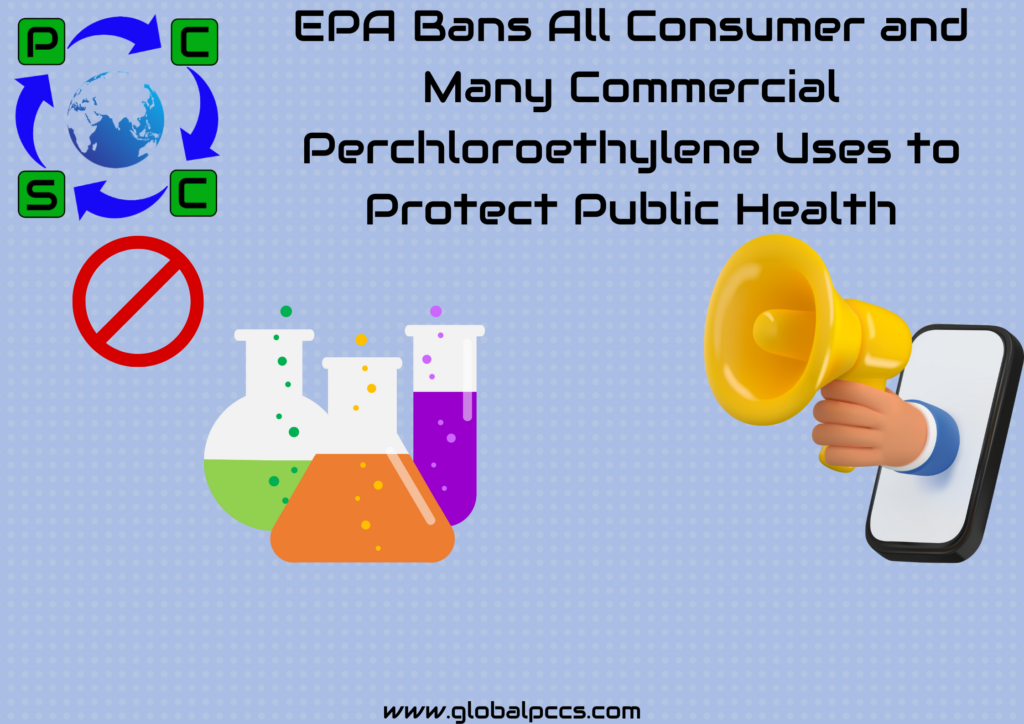
The EPA proposed a ban on most applications of perchloroethylene (PCE), a chemical linked to neurotoxicity and cancer, under the Toxic Substances Control Act (TSCA) today. Today’s proposal would protect people from these risks by banning all consumer uses and allowing many industrial/commercial uses only with strict workplace controls, including national security, aviation, critical infrastructure, and the Agency’s climate crisis efforts.
PCE is utilised in brake cleaners, adhesives, dry cleaning, and many industrial applications. PCE is a chemical intermediary used to make two American Innovation and Manufacturing Act-regulated chemicals. This rule proposes to continue processing PCE to generate hydrofluorocarbons (HFC)- 125 and HFC-134a, which can be blended with other substances to make more climate-friendly refrigerants, with strong workplace controls. The rule also allows PCE to be used in petrochemical manufacturing, aircraft skin coatings, and aerospace part and engine vapour degreasing.
Workers, occupational non-users (workers nearby but not in direct touch with this chemical), consumers, and those in close proximity to consumer use of PCE pose excessive health risks, according to EPA. Inhalation and cutaneous exposures can cause neurotoxicity and cancer, according to EPA. EPA identified a few fenceline communities at danger, but its proposed rule’s bans and other requirements should limit those risks.
EPA’s risk management regulation would rapidly scale down PCE manufacture, processing, and distribution for all consumer and many industrial and commercial uses, most of which would be phased out in 24 months. The proposed bans affect less than 20% of PCE output. EPA’s review determined that alternatives to PCE with comparable prices and efficacy are available for most of its proposed bans.
EPA proposes a 10-year phaseout of PCE in dry cleaning, with compliance dates depending on machine type. Dry cleaning workers would be safer without PCE. Dry cleaners, many of which are tiny enterprises, need time to switch to a new method, and stakeholders have already seen a year- to-year drop in PCE use in dry cleaning. President Biden’s Fiscal Year 2024 budget request included additional pollution prevention subsidies to help small firms comply with TSCA and offset economic repercussions. These funds could help dry cleaners migrate away from PCE.
For industrial manufacturing, industrial processing, and other uses of PCE that EPA is not seeking to ban, EPA is proposing a workplace chemical protection programme with a tight breathing exposure limit and restrictions to prevent skin exposure to safeguard employees. EPA has received data from industry suggesting many workplaces already have controls that may lower exposures enough to meet the proposed rule’s inhalation exposure limit or prevent direct skin contact with PCE.








 Authorised IMDS & CDX Training & Consulting partner for
Authorised IMDS & CDX Training & Consulting partner for






